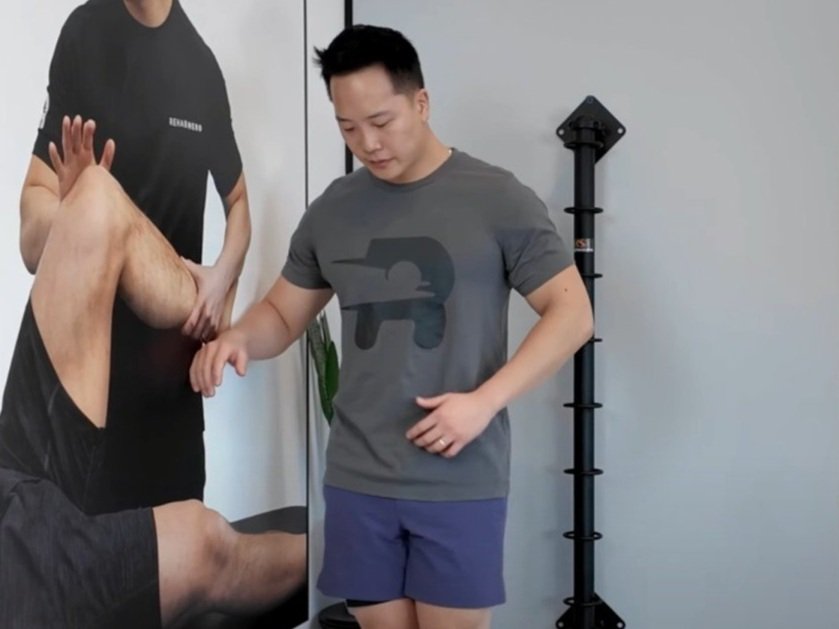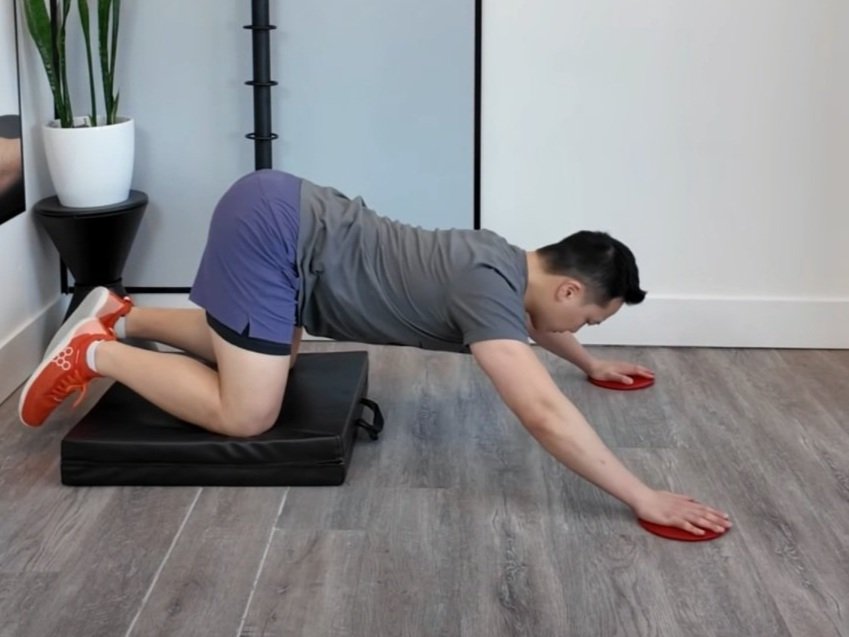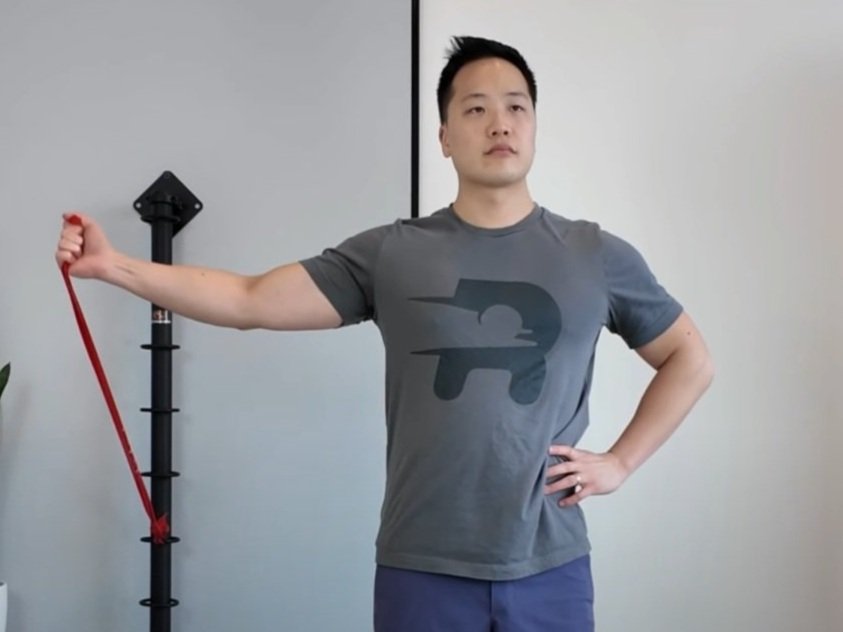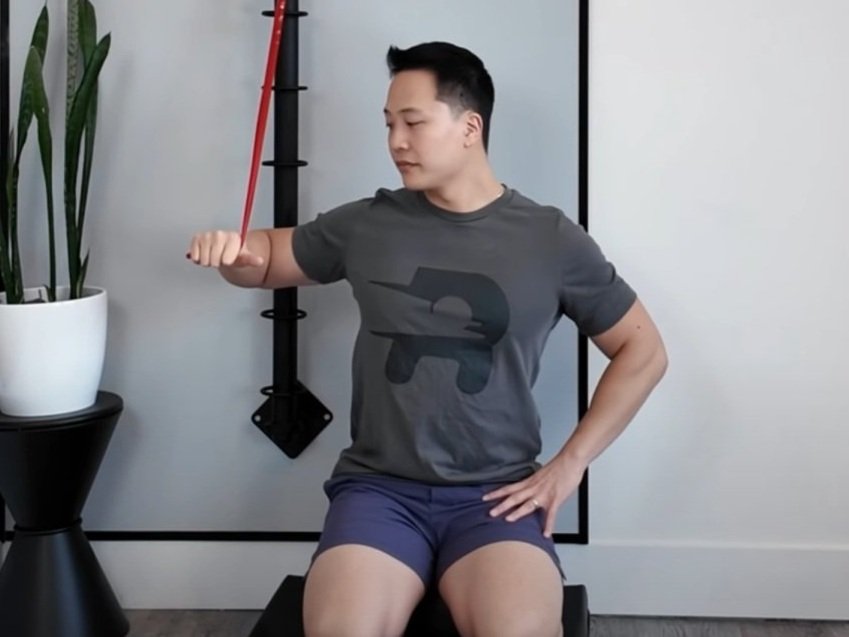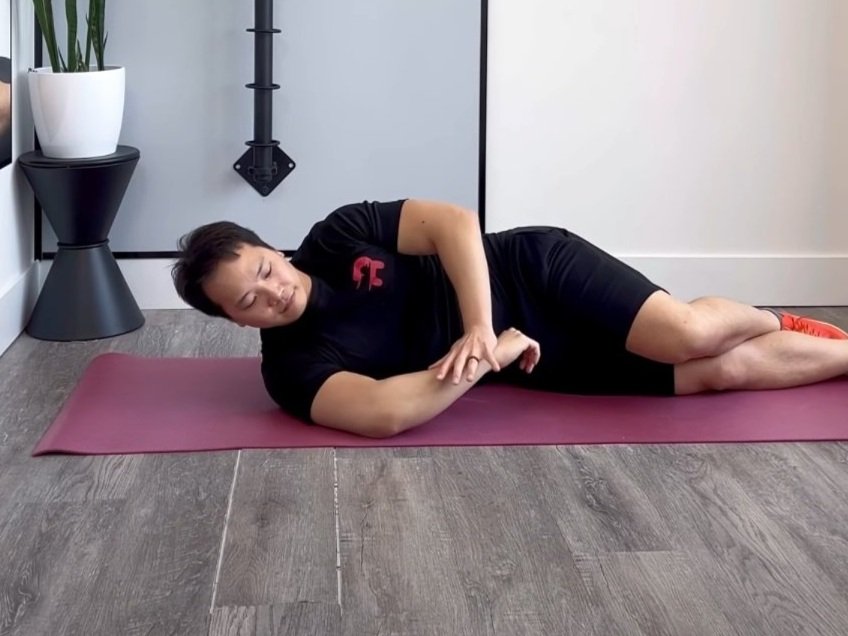Calficific Tendinitis of the Shoulder
Rotator cuff calcific tendinitis
Learn about how this painful condition can be affecting your rotator cuff tendons.
What is calcific tendinitis?
Calcific tendinitis, a type of enthesopathy, occurs when calcium deposits build up in your tendons as the result of acute trauma or repetitive microtrauma. This pathological deposition of calcium hydroxyapatite or calcium phosphate crystals is one common cause of joint pain. While this condition can affect any tendon in the body, the most affected areas are the hip and shoulder.
With regards to the shoulder, calcific tendinitis is the most common cause of shoulder pain with studies reporting that it is responsible for up to 40% of all shoulder pain cases. It occurs most commonly in those between the ages of 30 to 50 years and is twice as likely to occur in women than in men. It often affects one shoulder only but has a 10% incidence of affecting both shoulders. The most common rotator cuff muscle affected is the supraspinatus with a study reporting it occurring in this tendon in 60-80% of cases. Within the supraspinatus tendon, the most common location of the calcification is 1.5-2.0 cm from the insertion on the greater tuberosity of the humerus. This condition is considered self limited and is usually managed conservatively (with surgical intervention occurring when conservative management has failed).
Risk factors
The risk factors associated with calcific tendinitis include:
Diabetes
Gout
Endocrine disease
Frozen shoulder
Rotator cuff tear
Why do calcium deposits occur?
Currently there are two main schools of thought as to why pathological calcification of a tendon occurs. The two theories are degenerative calcification and reactive calcification.
Degenerative calcification: This theory believes that calcification is due to degenerative changes in the tendon that is associated with aging. These changes lead to decreased blood flow and oxygenation of the tendon, leading to hypoxia, thinning of the tendon, tearing of the tendon, necrosis and eventually calcification. Although this theory seems to make sense logically, it does not correlate with the fact that the calcific tendinitis is most common in those aged 30 to 50 years and is rare in those over the age of 70.
Reactive calcification: This theory involves a series of steps that occur in three stages. These stages are called the precalcific, calcific, and postcalcific stages. The precalcific stage involes the tenocytes of a tendon change into chondrocytes (this is change is called metaplasia) leading to fibrocartilaginous changes to occur in the tendon.
At this point the pathology transitions into the calcific stage which is composed of three phases: formative, resting and resorptive phases. During the formative phase the calcium deposits are formed. Deposition of calcium stops during the resting phase, and is absorbed by macrophages and giant cells during the resorptive phase. During the resorptive phase is when pain is experienced.
During the final stage, the postcalficic stage, the spaces where the calcium deposits were are replaced with granular tissues. Calcific tendinitis eventually progresses to bursitis and synovitis due to the chemical reactions occurring as a result of the calficium deposits. This leads to local swelling and increased pressure. This then leads to thickening of the bursa which can lead to increase compressive forces in the tendon.
What does calcific tendinitis feel like?
If you’re in the resorptive phase, intense acute pain can occur suddenly and feel worse at night (this is due to the natural inflammation cycle of the body). Patients may notice that it is painful to lie down on the affected shoulder if they are a side sleeper, and also notice that their range of motion is limited due to pain. Posturally the patient may sit with their shoulder internally rotated to relieve pain. Upon observation of the skin it may be noted that the skin is red or has local heat.
Due to the presentation of this condition and the amount of pain that it produces, this condition can mimic other conditions such as septic arthritis, frozen shoulder, bursitis, and muscle strains.
Who to see for a diagnosis
Calcific tendinitis is diagnosed during an initial assessment with a physiotherapist, chiropractor, or medical doctor. Following a thorough patient history and physical examination, your health care provider may also refer you for diagnostic imaging for the confirmation of calcification. During the evaluation, your healthcare provide will observe pain with forward flexion of the shoulder.
Treatment options for rotator cuff calcific tendinitis
The first step for treatment is through conservative treatment. Conservative treatment has a success rate of 30-80% depending on the intensity and type of calcific tendinitis. Conservative treatment includes joint mobilization, physical therapy, exercise rehabilitation, and shockwave therapy.
Joint mobilization: This type of treatment is used during acute stages of healing (0-2 weeks) for maintaining passive range of motion. This is completed to prevent the development of muscle contractures or the progression of this condition to frozen shoulder. This treatment can be completed by a wide array of therapists including naturopaths, chiropractors, physiotherapists and massage therapist.
Exercise rehabilitation: Exercises prescribed to you by your physiotherapist or chiropractor will change depending on which stage of healing you are currently in. During the acute stage passive range of motion exercises such as the shoulder pendulum exercise is used to reduce pain and maintain mobility. During chronic stages of healing strengthening exercises like the kettlebell reverse pendulum is used instead.
Radial shockwave therapy: Shockwave therapy has been shown to be an effective treatment for calcific tendinitis. One study revealed complete resolution of symptoms in 75% of patients after 12 weeks of shockwave therapy. Another study on 80 patients with chronic rotator cuff calcific tendinitis revealed that patients treated with radial shockwave therapy once a week for 4 weeks had statistically significant improvements compared to the control group. If you’re looking to get treated with radial shockwave therapy in North York or Markham, book in a visit with one of our chiropractors or physiotherapists by using the button below.
Natural history
Natural history refers to a condition’s ability to resolves on it’s own without treatment. Calcific tendinitis is self-limiting that can be painful with activity for months/years with spontaneous resolution in many cases. However, complications during natural history can arise leading to adhesive capsulitis (frozen shoulder), rotator cuff tears, greater tuberosity osteolysis and ossifying tendinitis. Studies report that about 70% of patients experience spontaneous resolution of symptoms in 49 months, and 82% within 8.6 years.
Written by: Dr. David Song
Dr. David Song is a chiropractor located in North York, Ontario. With a focus on strength training he helps his patients feel the confidence they need to continue their regular training and to maintain an active lifestyle.
References
Siegal DS, Wu JS, Newman JS, Del Cura JL, Hochman MG. Calcific tendinitis: a pictorial review. Can Assoc Radiol J. 2009 Dec;60(5):263-72. doi: 10.1016/j.carj.2009.06.008. PMID: 19931132.
Kim MS, Kim IW, Lee S, Shin SJ. Diagnosis and treatment of calcific tendinitis of the shoulder. Clin Shoulder Elb. 2020 Nov 27;23(4):210-216. doi: 10.5397/cise.2020.00318. PMID: 33330261; PMCID: PMC7726362.
Umamahesvaran B, Sambandam SN, Mounasamy V, Gokulakrishnan PP, Ashraf M. Calcifying Tendinitis of Shoulder: A Concise Review. J Orthop. 2018 May 20;15(3):776-782. doi: 10.1016/j.jor.2018.05.040. PMID: 29946204; PMCID: PMC6014564.
Wang CJ, Yang KD, Wang FS, Chen HH, Wang JW. Shock wave therapy for calcific tendinitis of the shoulder: a prospective clinical study with two-year follow-up. Am J Sports Med. 2003 May-Jun;31(3):425-30. doi: 10.1177/03635465030310031701. PMID: 12750138.
Duymaz T, Sindel D. Comparison of Radial Extracorporeal Shock Wave Therapy and Traditional Physiotherapy in Rotator Cuff Calcific Tendinitis Treatment. Arch Rheumatol. 2019 Jan 28;34(3):281-287. doi: 10.5606/ArchRheumatol.2019.7081. PMID: 31598593; PMCID: PMC6768789.














